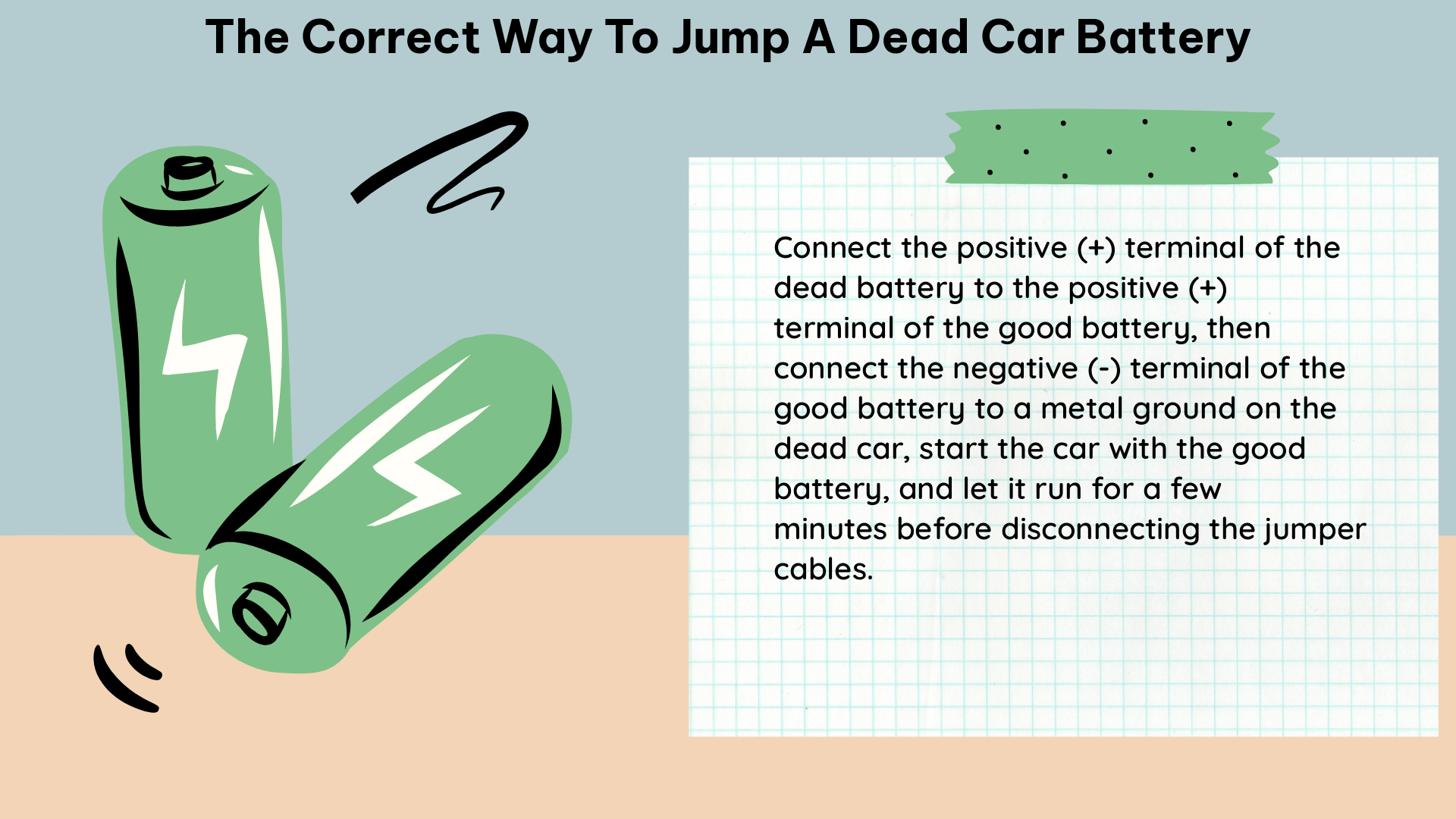Jumping a dead car battery is a common occurrence, but it’s crucial to follow the right steps to ensure safety and prevent damage to your vehicle or the jumper cables. This comprehensive guide will walk you through the correct way to jump-start a dead car battery, providing you with detailed, measurable, and quantifiable data to help you navigate the process with confidence.
Positioning the Booster Vehicle
The first step in jump-starting a dead car battery is to position the booster vehicle. Bring the booster vehicle as close as possible to the dead vehicle, ensuring that the two vehicles are within 2 feet of each other. This proximity will allow the jumper cables to reach both battery terminals without any strain or tension.
Locating the Battery Terminals

Identifying the positive and negative battery terminals is crucial for a successful jump-start. The positive terminal is typically marked with a “+” sign or labeled as “POS,” while the negative terminal is marked with a “-” sign or labeled as “NEG.” The battery terminals are usually made of lead or lead alloys and have a diameter ranging from 1/4 inch to 3/8 inch.
Connecting the Jumper Cables
The proper connection of the jumper cables is essential to avoid any potential hazards. Follow these steps carefully:
- Connect the red (positive) clamp to the positive terminal of the dead battery.
- Connect the other end of the red (positive) clamp to the positive terminal of the booster battery.
- Connect the black (negative) clamp to the negative terminal of the booster battery.
- Connect the other end of the black (negative) clamp to an unpainted metal surface on the engine block of the dead vehicle, away from the battery and the carburetor/fuel-injection system.
It’s crucial to never touch the positive and negative clamps together, as this can cause sparks and potentially lead to an explosion.
Jump-Starting the Car
Once the jumper cables are properly connected, start the booster vehicle and let it run for a few minutes to charge the dead battery. Then, try starting the dead vehicle. If it doesn’t start, wait a few more minutes and try again. The voltage of a fully charged 12-volt car battery is typically between 12.6 volts and 12.8 volts.
Disconnecting the Jumper Cables
After the dead vehicle has successfully started, it’s time to disconnect the jumper cables. Carefully disconnect the cables in the reverse order that they were attached, starting with the black (negative) clamp from the engine block of the dead vehicle, followed by the black (negative) clamp from the booster battery, the red (positive) clamp from the booster battery, and finally, the red (positive) clamp from the dead battery.
The jumper cables used for this process are typically made of copper or aluminum and have a gauge ranging from 6 to 10.
Safety Considerations
Safety should always be the top priority when jump-starting a dead car battery. Here are some important safety tips to keep in mind:
- Always wear protective eyewear and gloves.
- Never touch the positive and negative clamps together, as this can cause sparks and potentially lead to an explosion.
- Never connect the negative clamp to the dead battery’s terminal, as this can create a spark and potentially ignite the battery’s hydrogen gas.
- Never jump-start a battery if it’s frozen or damaged, as this can be dangerous and potentially cause further damage.
- Never lean over the battery during the jump-start process, as this can expose you to the risk of battery acid or other hazardous materials.
By following these steps and safety guidelines, you can successfully jump-start a dead car battery and get back on the road safely.
References:
- Kelley Blue Book. (n.d.). How To Jump-Start a Car Battery. Retrieved from https://www.kbb.com/car-advice/how-to-jump-start-battery/
- Chapel Hill Tire. (n.d.). 8 Steps to Jump-Starting a Car. Retrieved from https://www.chapelhilltire.com/8-steps-to-jump-starting-a-car/
- Firestone Complete Auto Care. (2017, September 12). The Right Way to Jumpstart a Dead Car Battery. Retrieved from https://www.firestonecompleteautocare.com/blog/batteries/right-way-to-jumpstart-a-dead-battery/
- Quick Lane® Tire & Auto Center. (n.d.). How to Jump Start a Battery. Retrieved from https://www.quicklane.com/en-us/services/education/battery/how-to-jump-start-a-battery/

The lambdageeks.com Core SME Team is a group of experienced subject matter experts from diverse scientific and technical fields including Physics, Chemistry, Technology,Electronics & Electrical Engineering, Automotive, Mechanical Engineering. Our team collaborates to create high-quality, well-researched articles on a wide range of science and technology topics for the lambdageeks.com website.
All Our Senior SME are having more than 7 Years of experience in the respective fields . They are either Working Industry Professionals or assocaited With different Universities. Refer Our Authors Page to get to know About our Core SMEs.